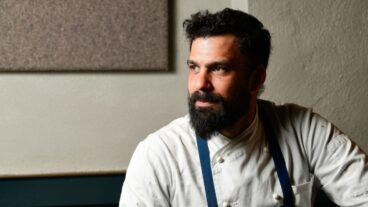Israeli physicist Harry Zvi Tabor has devoted his life to researching solar energy. His achievements have already transformed the industry, but at 92, he’s still creating.
When Prime Minister David Ben-Gurion invited British physicist Harry Zvi Tabor to join the new state’s Research Council in March of 1949, he was surprised to learn that Tabor already had a plane reservation.
“The cable arrived 10 days before I left England,” Tabor tells ISRAEL21C. “I had decided to emigrate on April 1, and I told Ben-Gurion I was coming right away. He wasn’t even ready for me!”
But the country was more than ready for Tabor, who at 92 is still a vital member of its scientific community. In recognition of his groundbreaking achievements in solar energy, Tabor recently received the American Jewish Congress Lifetime Achievement Award at a conference organized by the Israeli Renewable Energy Union.
Early in his 24-year tenure as founding director of Israel’s National Physical Laboratory, Tabor identified solar energy as an area needing original research. “In a country with no raw materials and no fuel, the sun was an obvious thing,” he says. “But it wasn’t obvious to anybody else. At that time, harnessing solar energy generally was considered an activity of cranks.”
By 1955, Tabor had devised a way to double the efficiency of the primitive solar collectors then available. The Tabor Selective Surface radically minimized heat loss through radiation and convection from the panel’s surface. This innovation not only yielded more hot water, but gave the solar water heater the potential to produce electricity in large quantities via a turbine or engine.
Reducing pollution and oil consumption
Tabor’s product was the hit of the first international solar energy conference that year in Arizona. As a result, an Israeli company eventually installed five large solar power stations in California that have served as models for many others. Tabor’s continued solar-energy innovations are credited with greatly reducing pollution and oil consumption in the Mediterranean region and beyond.
At home, the transformation was gradual. “It actually wasn’t until 1980 that the Israeli government issued a ruling that all new houses up to a certain size must have a solar water heater,” he says.
Tabor, who has a doctorate in alternative energy from the Hebrew University in Jerusalem, also lent his expertise to climate-friendly building and other ventures for which he has garnered several awards. Among them are the Gold Medal of the Royal Society (UK) and the Gold Medal of the Diesel Foundation (Germany).
In 1961, he and engineer Lucien Bronicki unveiled a turbo-generator that solved a problem inherent in solar energy systems that rely on temperatures high enough to turn water into steam. Their turbine used an alternative liquid that could drive an electric generator even when the sun’s rays are weak.
Though the turbine did not catch on in the solar market, Bronicki later applied their invention to geothermal energy production. His company, Ormat Industries, which installs the turbines in 100 countries, is today one of the most successful in Israel. Two years ago, Bronicki even lured Tabor out of a 15-year retirement to help train its young scientists.
And even electric cars
Tabor also turned his attention to vehicles. “I realized a third of the energy the Western world uses is for transportation,” he says. In 1974, way before Toyota’s revolutionary hybrid gas-electric engine, Tabor fashioned a prototype vehicle using an energy-conserving flywheel that improved the electric car’s sluggish performance.
“It did not take off because there was no organized market for electric vehicles then,” he says. “I had to wait 21 years to see a hybrid vehicle appear on the market.” Today, Tabor is pleased that Israel is leading the world in developing an infrastructure for personal electric transportation.
At home with his wife Vivienne in Jerusalem’s Beit Hakerem neighborhood, Tabor enjoys literature, music, and the company of visiting grandchildren. But he has not stopped creating.
“I spend six or eight hours a day trying to think up new schemes to make solar devices more economical,” says the scientist, whose latest patent in solar technology was awarded last year. “I’m lucky to be working in an area where the market is guaranteed. The demand for energy is always on the upgrade, even in crisis periods.”













